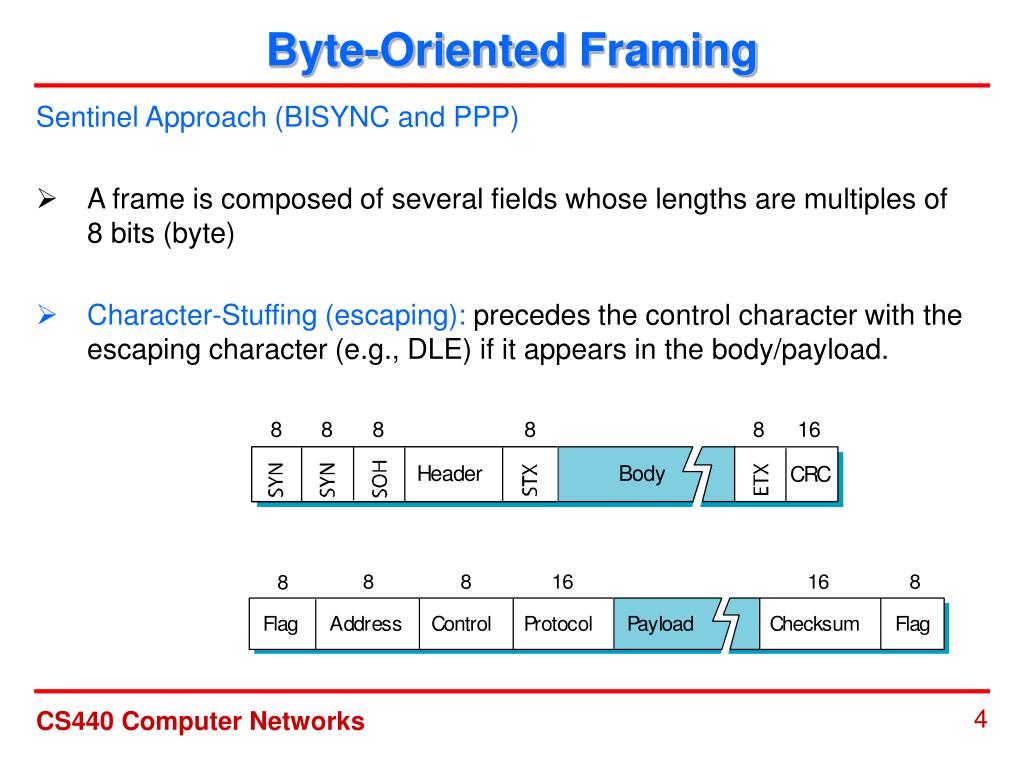

PPP FRAME STUFFING CODE
pppd includes 13,000 lines of code (2,100 lines alone in main.c), which means that it is four times the size of the three kernel modules ( ppp_generic.c, ppp_synctty.c, and ppp_async.c) together. For this reason, the kernel modules are rather simple. During design of this division, care was taken to move as little functionality as possible into the Linux kernel. Virtual circuits are used in Frame Relay and X.25.As mentioned before, the PPP implementation in Linux is divided into four different tasks: three kernel modules and the pppd user space daemon. A virtual circuit can be either permanent (a PVC) or switched (an SVC). Virtual circuit (VC) -A logical circuit created to ensure reliable communication between two network devices. Point-to-Point Protocol (PPP)-A protocol that encapsulates network layer protocol information over point-to-point links. PVCs save bandwidth associated with circuit establishment and teardown in situations where certain virtual circuits must exist all the time. Permanent virtual circuit (PVC)-Virtual circuit that is permanently established. Link Control Protocol (LCP)-A protocol that establishes, configures, and tests data link connections used by PPP. Integrated Services Digital Network (ISDN)-Communication protocols offered by telephone companies that permit telephone networks to carry data, voice, and other source traffic. In the LMI extended specification, DLCIs are globally significant (DLCIs specify individual end devices).

In the basic Frame Relay specification, DLCIs are locally significant (connected devices might use different values to specify the same connection). Ip address 209.165.200.225 255.255.255.224īy default, the encapsulation type for a virtual template interface is PPP encapsulation therefore, the encapsulation ppp command will not show up when viewing the running configuration on the router.ĭata-link connection identifier (DLCI)-A value that specifies a PVC or SVC in a Frame Relay network. The three commands required for this type of configuration are frame-relay switching, frame-relay intf-type dce, and frame-relay route commands.įrame-relay route 31 interface Serial1/2 100įrame-relay interface-dlci 32 ppp Virtual-Template1įrame-relay interface-dlci 40 ppp Virtual-Template2 Typically, a router is configured as a DCE if connecting directly to another router or if connected to a 90i D4 channel unit, which is connected to a telco channel bank. The following example configures a router to act as a data communications equipment (DCE) device. The breakdown of the Frame Relay frame format components is listed in the table below. Once a Frame Relay circuit is established using PPP over Frame Relay, all incoming and outgoing packets on this circuit are under RFC 1973 PPP-in-Frame-Relay encapsulation compliance until this DLCI is removed from the configuration. Hardware compression and fancy queuing algorithms, such as weighted fair queuing, custom queuing, and priority queuing, are not applied to virtual access interfaces. One virtual template interface, containing all the necessary PPP and network protocol information, is shared by multiple virtual access interfaces.

The virtual access interfaces is coexistent with the creation of the Frame Relay circuit when the corresponding DLCI is configured. A virtual access interface is cloned from a virtual template interface. One PPP connection resides on one virtual access interface, which is internally created from a virtual template interface. There can be multiple PPP-in-Frame-Relay circuits existing on one Frame Relay link. The Frame Relay VC can coexist with other circuits using different Frame Relay encapsulation methods, such as RFC 1490 and Cisco proprietary, over the same Frame Relay link. The PPP session does not occur unless the associated Frame Relay PVC is in an "active" state. A PPP connection is established over the Frame Relay PVC.


 0 kommentar(er)
0 kommentar(er)
